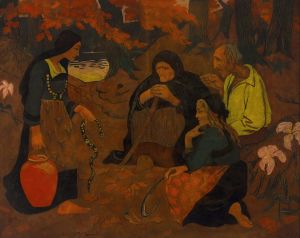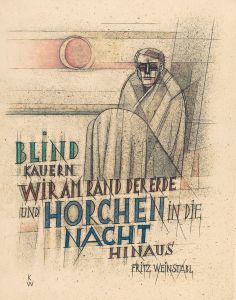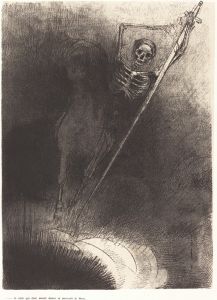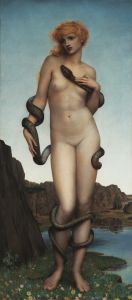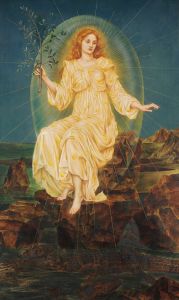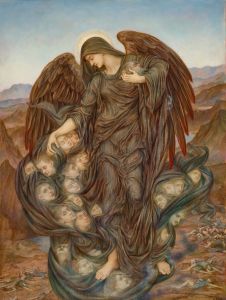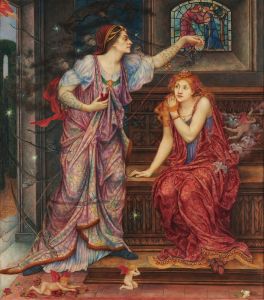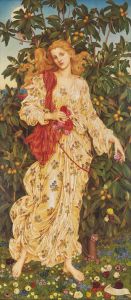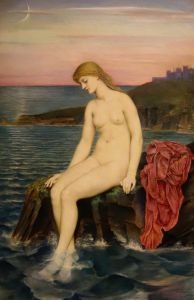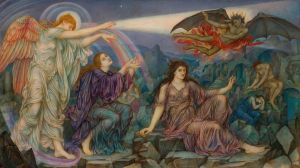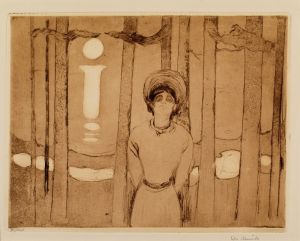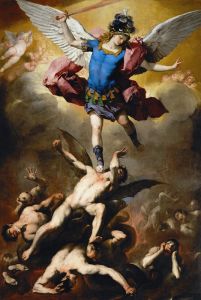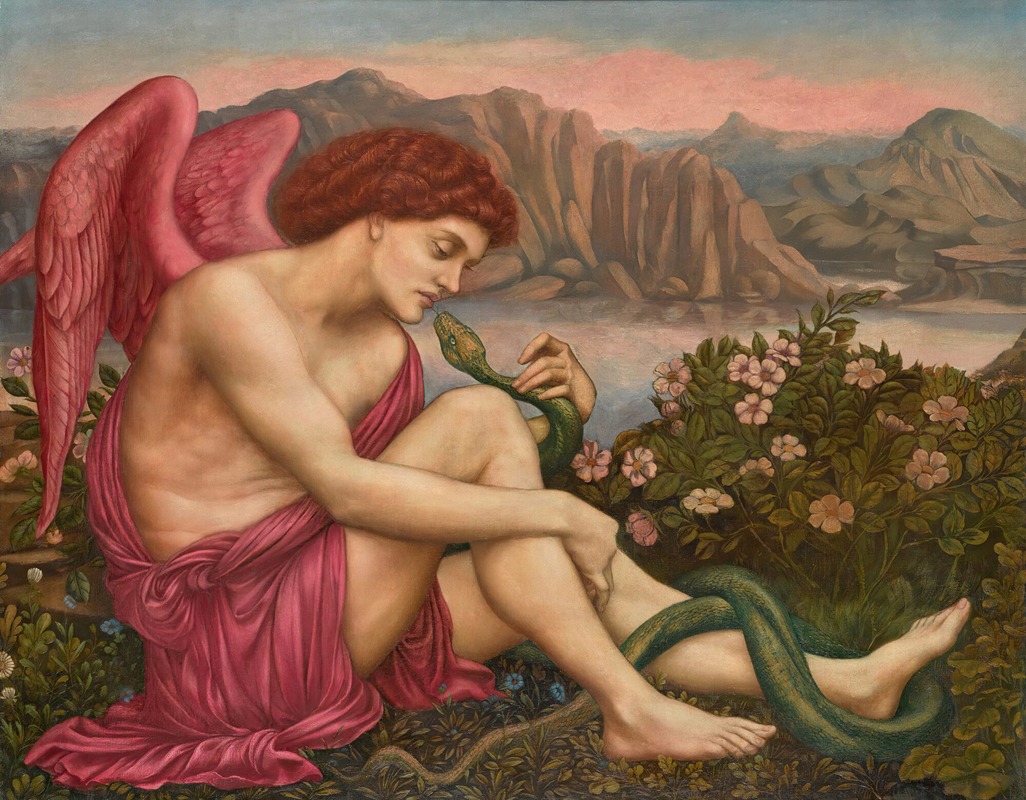
The Angel With The Serpent
A hand-painted replica of Evelyn De Morgan’s masterpiece The Angel With The Serpent, meticulously crafted by professional artists to capture the true essence of the original. Each piece is created with museum-quality canvas and rare mineral pigments, carefully painted by experienced artists with delicate brushstrokes and rich, layered colors to perfectly recreate the texture of the original artwork. Unlike machine-printed reproductions, this hand-painted version brings the painting to life, infused with the artist’s emotions and skill in every stroke. Whether for personal collection or home decoration, it instantly elevates the artistic atmosphere of any space.
Evelyn De Morgan was a notable English painter associated with the Pre-Raphaelite movement, known for her symbolic and allegorical works. One of her significant paintings is "The Angel With The Serpent," which exemplifies her unique style and thematic focus.
"The Angel With The Serpent" was painted in 1870, during a period when De Morgan was deeply influenced by the Pre-Raphaelite Brotherhood, a group that sought to return to the detail, intense colors, and complex compositions of Quattrocento Italian art. De Morgan, however, infused her work with her own distinctive approach, often incorporating themes of spirituality, mysticism, and feminism.
In this painting, De Morgan presents an angelic figure, characterized by ethereal beauty and grace, holding a serpent. The angel is depicted with flowing robes and large, expressive wings, embodying purity and divine presence. The serpent, traditionally a symbol of temptation and evil, is rendered with intricate detail, coiled around the angel's arm. This juxtaposition of the angel and the serpent suggests a complex interplay between good and evil, a theme that De Morgan explored in various works.
Evelyn De Morgan's use of color in "The Angel With The Serpent" is particularly noteworthy. She employs a rich palette, with luminous whites and golds for the angel, contrasting with the darker, more subdued tones of the serpent. This contrast not only highlights the central figures but also enhances the symbolic tension within the painting. The background is often kept minimal, focusing the viewer's attention on the interaction between the angel and the serpent.
De Morgan's work is often interpreted through the lens of her personal beliefs and the broader cultural context of her time. She was known for her interest in spiritualism and theosophy, which may have influenced her depiction of otherworldly subjects and the moral dichotomies present in her art. Additionally, as a woman artist in the late 19th century, De Morgan's work is sometimes seen as a commentary on the roles and perceptions of women, with the angel possibly representing an ideal of feminine purity and strength.
"The Angel With The Serpent" is housed in the De Morgan Collection, which is dedicated to preserving and exhibiting the works of Evelyn De Morgan and her husband, the ceramicist William De Morgan. The collection provides valuable insight into the artistic and personal partnership between the two, as well as the broader artistic movements of their time.
Evelyn De Morgan's legacy as an artist is marked by her commitment to exploring profound themes through a distinctive visual language. "The Angel With The Serpent" remains a testament to her skill and vision, reflecting both the aesthetic ideals of the Pre-Raphaelite movement and her own unique perspective on the eternal struggle between light and darkness.





